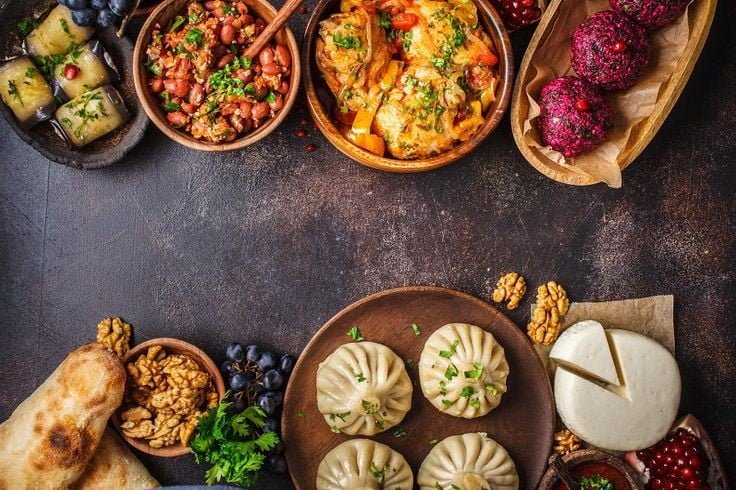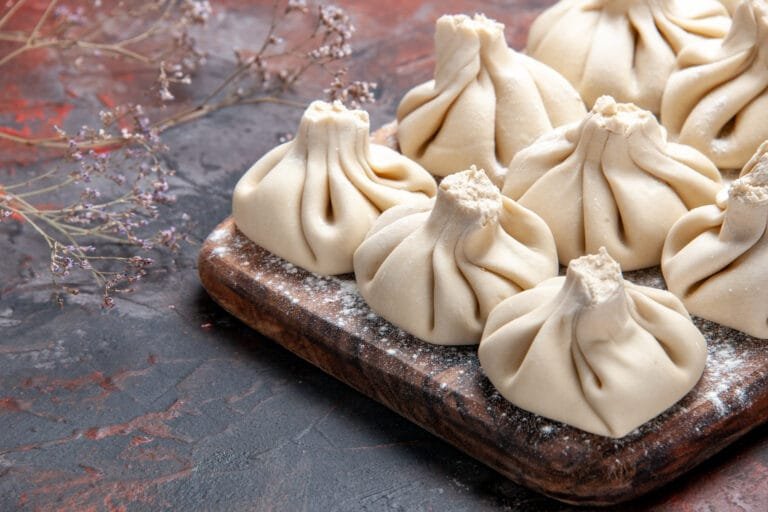Georgian Wine: the World’s Oldest Winemaking Tradition and Unique Varieties
Grape cultivation and winemaking traditions have flourished in many countries, but few are aware that research confirms Georgian wine is the oldest in the world.
Georgian cuisine and winemaking are renowned globally for their rich diversity and exceptional flavors. Here, you can savor a wide variety of traditional dishes, each perfectly paired with its corresponding wine.
History of Georgian Wine
In 2015, researchers exploring the origins of agriculture discovered ancient clay containers from 8,000 years ago during an archaeological excavation in southeastern Georgia.
This Neolithic-era site is a collaborative initiative between the Georgian National Museum and the University of Toronto.
Archaeologists discovered wine remnants in the ruins of a settlement and studied several clay vessel fragments found there.
A chemical analysis of the clay vessels revealed deposits of calcium salts of tartaric acid, a component of wine.
These deposits confirmed that the clay pottery once contained wine or grape juice.
This discovery confirmed that the relationship between humans and the vine began as early as the 6th millennium B.C., including not only the first cultivated vine but also the earliest remains found within the territory of Georgia.

Archaeological discoveries now provide tangible proof to bolster Georgia’s assertion as the world’s oldest wine-producing nation.
The country has an uninterrupted tradition of winemaking spanning at least 8,000 years.
Located at the intersection of Europe, Asia, and the Middle East—and benefiting from a climate and landscape ideal for grape cultivation—ancient Georgia provided wines and vines to the earliest cities of the Fertile Crescent, including Babylon and Ur.
Winemaking as the main industry in Georgia is mentioned in Assyrian, ancient Greek, and Byzantine sources. Xenophon, Apollonius of Rhodes, Strabo, and Procopius wrote about it.
This rich heritage is reflected in the prevalence of wine and vine motifs in Georgian folk art and cultural artifacts.
Some linguists claim that the word “wine,” common in various languages worldwide, has Georgian roots.
Supporters of this point of view see a semantic connection with the Georgian name of the product “Ghvino” (“ღვინო”), which comes from the word “Gvivili,” meaning fermentation.
Qvevri: A Unique Georgian Winemaking Tradition
The ancient Georgian method of making wine in Qvevri has no analogs in the world.
When humans started using clay, dated to the Neolithic period, large vessels began to appear in Georgia.
These are regarded as the forefathers of Qvevri.

In Georgia, people have been making wine in Qvevri for centuries.
This large clay vessel, which people bury underground, seals tightly; inside, grape juice ferments into wine.
Georgians believe that Qvevri is where wine is born, grows, matures, and ages.
There are two main centers of Qvevri making in Georgia: Western Georgia in Upper Imereti and Kakheti.
Qvevri-maker is not a usual profession. Each generation passes down this knowledge, blending expertise with a sense of mystic intuition.
Qvevri-makers insist on constructing a Qvevri only in a closed environment where the air remains perfectly still—without even the slightest breeze. Furthermore, the temperature must be even.
Professionals build it like a house, step by step, forming circular layers, maintaining humidity, and drying each layer sequentially.
They use no particular instruments during the construction of a Qvevri, as skipping any of these steps causes fresh clay to drop and break.
Once the building is completed, the final stage begins—the Qvevri is dried out.
The Qvevri-maker bakes several at a time, and a single mistake can ruin everything.
Kakhetian wine containing tannin is famous for its medicinal properties and acquires an orange color.
When you make wine with Dedo (pomace), all the richness of its skin is slowly transferred to the wine.
In 2013, the ancient Georgian traditional Qvevri wine-making method was granted the status of a UNESCO intangible cultural heritage monument.
Marani: The Georgian Wine Cellar
Marani is a building designed for grape pressing, wine production, and storage.
In ancient Georgia, marani had both technical and religious significance.
During invasions, some church rites, such as wedding ceremonies and baptisms, were performed in the wine cellar when churches and monasteries were raided.
There are two types of marani in Georgia—open and closed.

In Eastern Georgia, closed cellars are common, designed to suit the region’s natural conditions by shielding wine from winter frost and summer heat.
In Western Georgia, open cellars are more typical, crafted to handle the area’s high humidity.
Rtveli: Georgia’s Grape Harvest Celebration
Georgians have practiced the tradition of Rtveli for centuries.
Harvesting in Georgia goes beyond picking grapes; it blends hard work with festive celebrations.
Georgians traditionally determine the day of Rtveli by observing the moon, and this day typically coincides with good weather.
Rtveli in Georgia begins in September in Kakheti with the Rkatsiteli harvest and ends in December with the Chkhaveri harvest in Guria.

Family members and relatives usually gather for the harvest, which starts early in the morning.
It is important to crush the harvested grapes on the same day because if they are left overnight, they will spoil.
The Art of Georgian Winemaking
Preparing Qvevri to keep the wine, producing it, and maturing it is a long process.
People squeeze grapes in a Satsnakheli, a tool for pressing grapes made from wood, clay, or stone.
Traditionally, grapes in the Satsnakheli are pressed by foot.
Although modern automatic and manual presses are now available, Georgian farmers claim foot-pressed wine has a unique flavor.
This is because foot-pressing avoids crushing the klerti (stems). When unripe stems break, they can make the wine tangy, astringent, and less pleasant to drink.
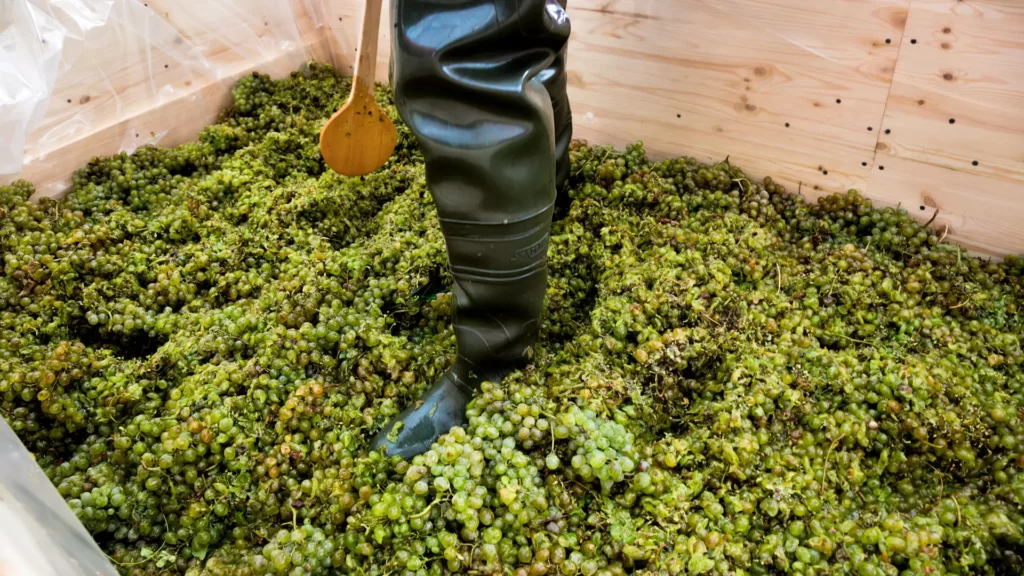
The winemaker transfers the juice, along with the skin and seeds (also known as Dedo) to a Qvevri.
Fermentation lasts for about two weeks.
They mix the juice with a special instrument called Samtita. Afterward, they seal the Qvevri and allow the juice to mature.
In Kakheti, the maturing process lasts 3-6 months, while in Western Georgia, it takes less time.
Finally, the winemaker uses a vessel and pump to filter the wine and transfer the matured wine, along with the grape pomace to a clean Qvevri.
The Unique Charm of Georgian Amber Wine
Amber wine is produced using the unique Qvevri technology, an ancient Georgian traditional method of winemaking.
Compared to traditional Qvevri wine, amber wine is lighter and has a more vibrant character.
It is also characterized by moderate tannins, setting it apart from European wines.
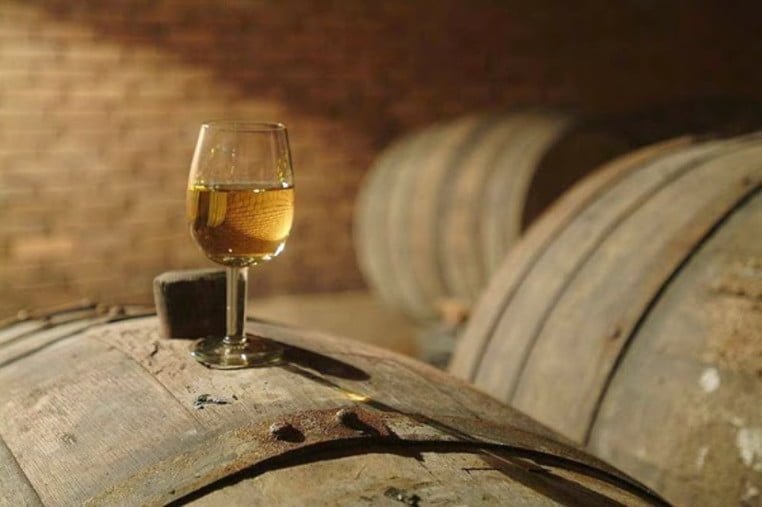
The process of making amber wine is different.
Fully ripened grapes are hand-picked, then pressed without the stem, and alcoholic fermentation begins.
This process takes 10-12 days in stainless steel tanks.
Unlike the traditional Qvevri method, the winemaker keeps the wine in contact with the grape pomace for only about a month and a half.
After this period, they separate the wine from the pomace and transfer it to a new tank for further refinement.
Finally, they filter the wine and bottle it.
Discovering Georgian Grape Varieties
Detailed studies reveal that Georgia boasts 525 grape varieties, with Kakheti leading the way with 80 varieties—a fact that comes as no surprise.
While every region of Georgia produces wine, Kakheti stands out as the primary center of viticulture.
The remaining grape varieties are distributed as follows: 72 in Kartli, 26 in Meskheti-Javakheti, 74 in Imereti, 50 in Racha-Lechkhumi, 59 in Guria, 60 in Samegrelo, 53 in Adjara, and 51 in Abkhazia.
Additionally, scientists have identified over 400 forms of the wild vine, the ancestor of the cultivated vine, throughout Georgia.

In Georgia, grape varieties are classified into wine and table grapes.
Among the wine varieties, the most notable and high-quality are Rkatsiteli, Saperavi, Mtsvane, Khikhvi, Kisi, Chinuri, Tsolikouri, Tsitska, Krakhuna, Aleksandrouli, Ojaleshi, Chkhaveri, Aladasturi, and others.
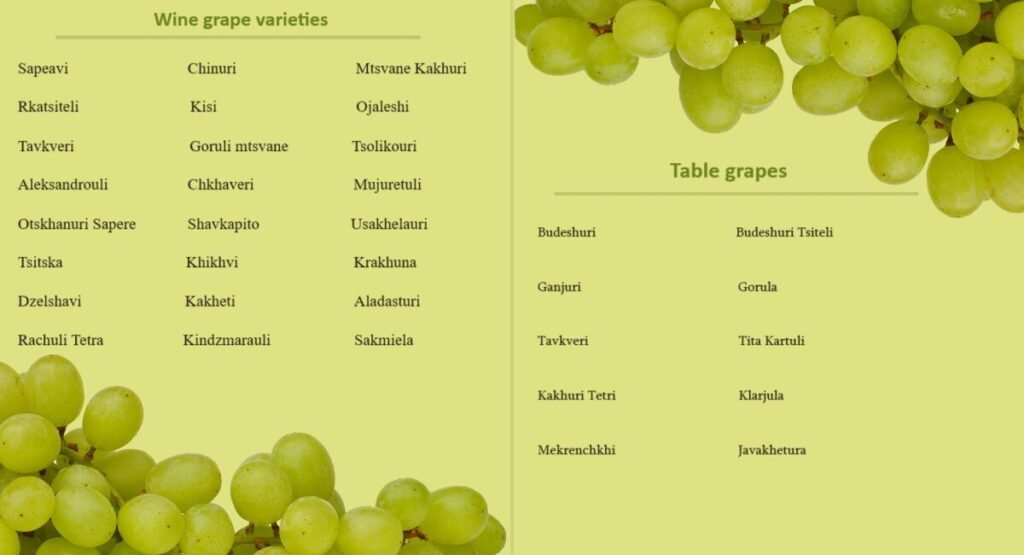
Where and What to Drink in Georgia
No matter your preference, Georgia offers a wine to suit every taste.
Each region pairs its wines with local dishes, creating a unique gastronomic experience.
Tbilisi – in the capital, you can sample wines from every corner of the country, with specialized wine bars and restaurants offering an extensive selection.
In Kakheti, known for its deep-rooted wine traditions, don’t miss the chance to taste Rkatsiteli, Saperavi, Kisi, and Kindzmarauli, best enjoyed with Kakheti’s famous dishes like Mtsvadi and Khashlama.
In Kartli, savor the rich flavors of Goruli Mtsvane and Chinuri wines.
Imereti offers the naturally sparkling Tsitska-Tsolikauri and the bold, flavorful Krakhuna wines.
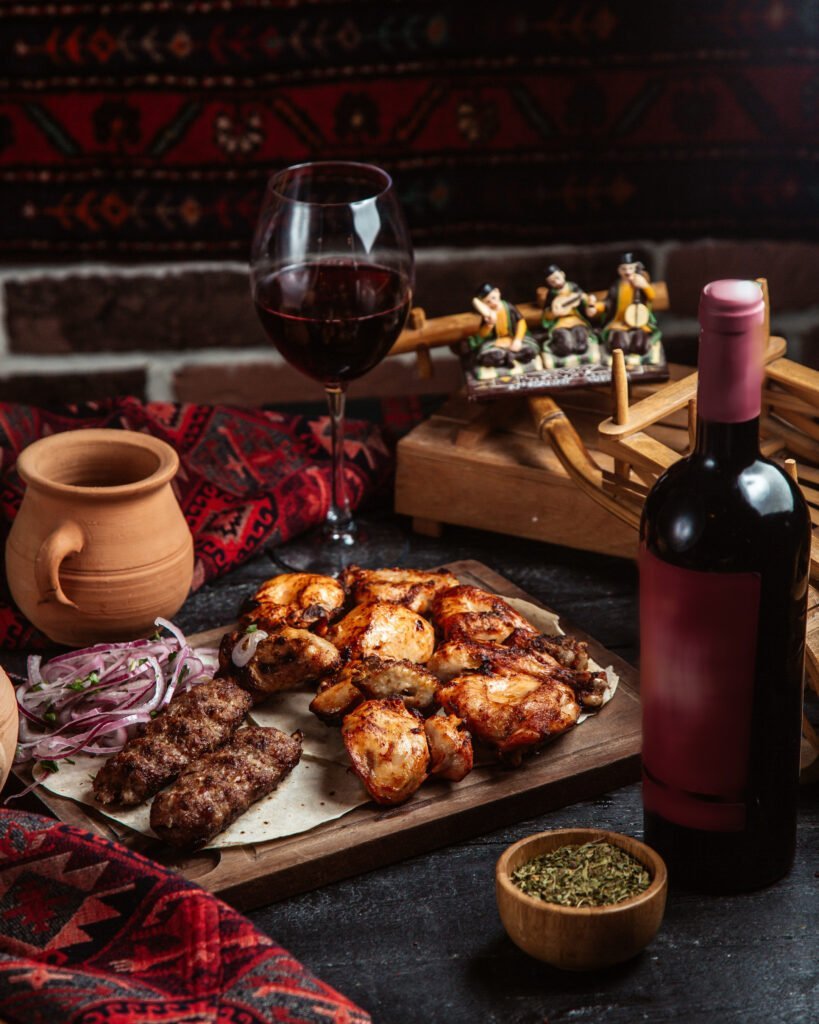
Samegrelo will surprise you with the exquisite Ojaleshi wine, paired with the region’s diverse cuisine.
In Racha-Lechkhumi, people savor the legendary Khvanchkara wine, one of the world’s most expensive varieties, alongside regional specialties like ham, Khachapuri, Lobiani, and Shkmeruli.
Guria and Adjara regions invite you to experience the renowned Chkhaveri, paired with local delicacies that promise to delight your palate.
Wine, culture, folklore, customs, cuisine, and the bond between Georgian hosts and their guests form the backbone of Georgia’s rich history.
Explore the labyrinth of Georgian wine and embark on a journey that will undoubtedly draw you back to this enchanting country time and again.




